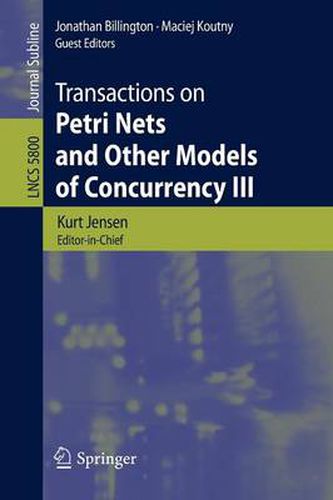Readings Newsletter
Become a Readings Member to make your shopping experience even easier.
Sign in or sign up for free!
You’re not far away from qualifying for FREE standard shipping within Australia
You’ve qualified for FREE standard shipping within Australia
The cart is loading…






This title is printed to order. This book may have been self-published. If so, we cannot guarantee the quality of the content. In the main most books will have gone through the editing process however some may not. We therefore suggest that you be aware of this before ordering this book. If in doubt check either the author or publisher’s details as we are unable to accept any returns unless they are faulty. Please contact us if you have any questions.
AccordingtoHolzmann [14], protocol speci?cationscomprise ?veelements: the service the protocol provides toits users; the set of messages that are exchanged between protocol entities; the format of each message; the rules governingm- sage exchange (procedures); and the assumptionsabout the environment in which the protocol is intended tooperate. In protocol standards documents, information related to the operatingenvironment isusually writteninformally andmayoccur in several di?erentplaces [37]. This informal speci?cation style canlead to misunderstandings andpossibly incompatible implementations. In contrast,executableformalmodelsrequireprecisespeci?cations oftheoperating environment. Ofparticularsigni?canceisthecommunicationmediumorchannel over which the protocol operates. Channelscan havedi?erent characteristics depending on the physical media (e. g. optical ?bre, copper, cable orunguided media (radio)) they employ. The characteristics also depend on the levelof the protocol inacomputer protocol architecture. Forexample, the link-leveloperates over a singlemedium,whereas the network, transport andapplication levelsmayoperate over a network,or network of networks such as the Internet,which couldemploy several di?erent physical media. Channels (such as satellite links) can be noisy resulting in bit errors in packets. To correct biterrors in packets, many importantprotocols (such the Internet’s TransmissionControl Protocol [27]) use CyclicRedundancy Checks (CRCs)[28] to detect errors. On detectingan error,the receiver discards the packet andrelies on the sender to retransmit itforrecovery,known as Au- maticRepeatreQuest(ARQ)[28]. Thisisachievedbythereceiveracknowledging the receipt of good packets, andby the transmitter maintainingatimer. When the timer expires before an acknowledgementhasbeen received, the transmitter retransmits packets that havebeen sent but are as yet notacknowledged. It may also be possibleforpacketsto be lost due to routers in networks discarding packets when congested.
$9.00 standard shipping within Australia
FREE standard shipping within Australia for orders over $100.00
Express & International shipping calculated at checkout
This title is printed to order. This book may have been self-published. If so, we cannot guarantee the quality of the content. In the main most books will have gone through the editing process however some may not. We therefore suggest that you be aware of this before ordering this book. If in doubt check either the author or publisher’s details as we are unable to accept any returns unless they are faulty. Please contact us if you have any questions.
AccordingtoHolzmann [14], protocol speci?cationscomprise ?veelements: the service the protocol provides toits users; the set of messages that are exchanged between protocol entities; the format of each message; the rules governingm- sage exchange (procedures); and the assumptionsabout the environment in which the protocol is intended tooperate. In protocol standards documents, information related to the operatingenvironment isusually writteninformally andmayoccur in several di?erentplaces [37]. This informal speci?cation style canlead to misunderstandings andpossibly incompatible implementations. In contrast,executableformalmodelsrequireprecisespeci?cations oftheoperating environment. Ofparticularsigni?canceisthecommunicationmediumorchannel over which the protocol operates. Channelscan havedi?erent characteristics depending on the physical media (e. g. optical ?bre, copper, cable orunguided media (radio)) they employ. The characteristics also depend on the levelof the protocol inacomputer protocol architecture. Forexample, the link-leveloperates over a singlemedium,whereas the network, transport andapplication levelsmayoperate over a network,or network of networks such as the Internet,which couldemploy several di?erent physical media. Channels (such as satellite links) can be noisy resulting in bit errors in packets. To correct biterrors in packets, many importantprotocols (such the Internet’s TransmissionControl Protocol [27]) use CyclicRedundancy Checks (CRCs)[28] to detect errors. On detectingan error,the receiver discards the packet andrelies on the sender to retransmit itforrecovery,known as Au- maticRepeatreQuest(ARQ)[28]. Thisisachievedbythereceiveracknowledging the receipt of good packets, andby the transmitter maintainingatimer. When the timer expires before an acknowledgementhasbeen received, the transmitter retransmits packets that havebeen sent but are as yet notacknowledged. It may also be possibleforpacketsto be lost due to routers in networks discarding packets when congested.